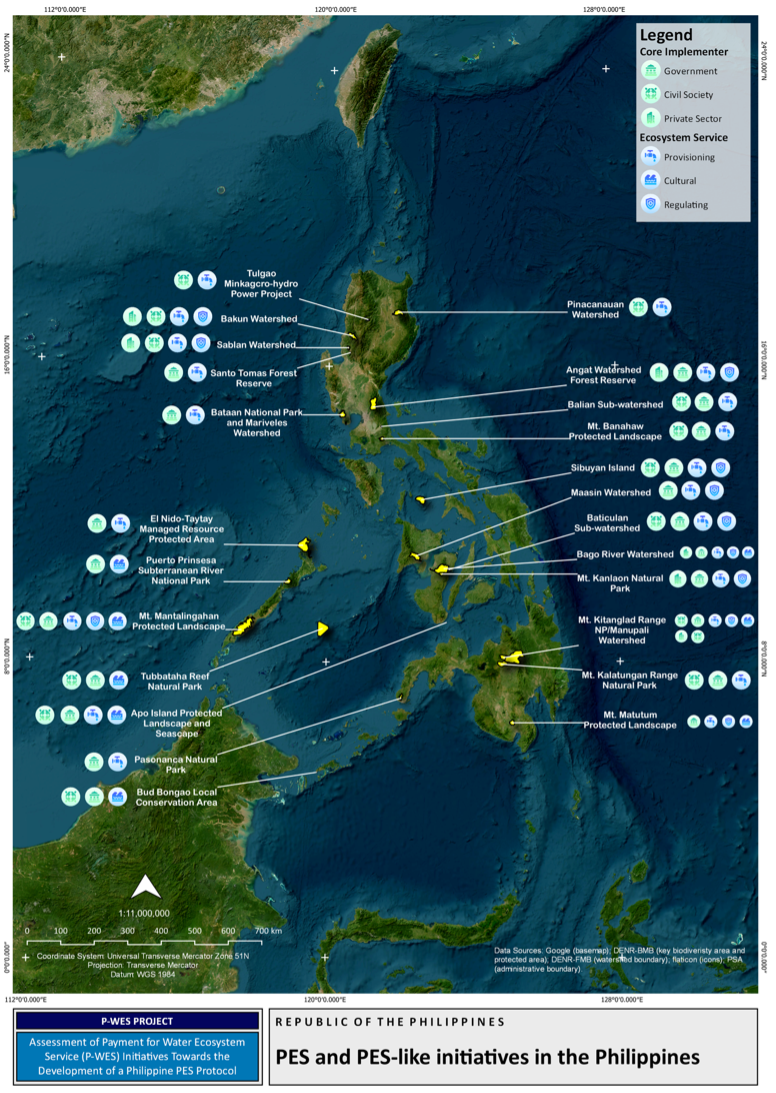VOLUME 17 (Supplement)

SciEnggJ 17 (Supplement) 281-303
available online: July 22, 2024
DOI: https://doi.org/10.54645/202417SupTBM-28
*Corresponding author
Email Address: jmpulhin@up.edu.ph
Date received: January 1, 2024
Date revised: March 13, 2024
Date accepted: May 1, 2024
ARTICLE
Catalysts and barriers in the development and implementation of payment for water ecosystem services in the Philippines: Retrospects and prospects
Forestry and Natural Resources, University of the Philippines
Los Baños, Los Baños, Laguna
2Department of Economics, College of Economics and
Management, University of the Philippines Los Baños,
Los Baños, Laguna
3Institute of Renewable Natural Resources, College of Forestry and
Natural Resources, University of the Philippines Los Baños,
Los Baños, Laguna
4Interdisciplinary Studies Center for Integrated Natural Resources
and Environment Management, University of the Philippines
Los Baños, Los Baños, Laguna
5Department of Science Communication, College of Development
Communication, University of the Philippines Los Baños,
Los Baños, Laguna
The Philippines has been experiencing water-related crises affecting millions of Filipinos in recent years. In the quest for viable solutions to better manage water resources, Payment for Ecosystem Services (PES) has received significant attention because of its positive impacts on improving water provision and natural resource conservation. However, many PES-related initiatives in various watershed areas in the Philippines were short-lived. This paper assessed the implementation of PES-related initiatives in various parts of the country and identified the catalysts and barriers in developing and implementing Payment for Water Ecosystem Services (P-WES). The paper also addresses the dearth of literature on PES in developing countries. Based on the Preferred Population, Interest, Context, Scope, and Time (PICoST) approach, the literature review was complemented with field research in seven (7) sites. Increasing demand for water while there is a decreasing water supply was the primary factor that led to the PES and PES-like initiatives. Catalysts and barriers were further analyzed based on the three pillars – science, economics, institutions, and governance. A well-defined framework, data for decision-making, functional markets, buyer-seller satisfaction, participatory/collaborative approaches, and capacitated stakeholders were identified as some of the catalysts. Among the barriers were issues related to site specificity, data, communication, administration, monitoring and evaluation, markets, valuation, policies, and enforcement. Prospects include PES as tools for natural resource conservation, sustainable financing mechanisms, localized modalities, knowledge enhancement, and institutionalized schemes. To realize the full potential of PES, its development and implementation should go beyond the local levels, and the enactment of a national PES policy is recommended to support this.
© 2025 SciEnggJ
Philippine-American Academy of Science and Engineering